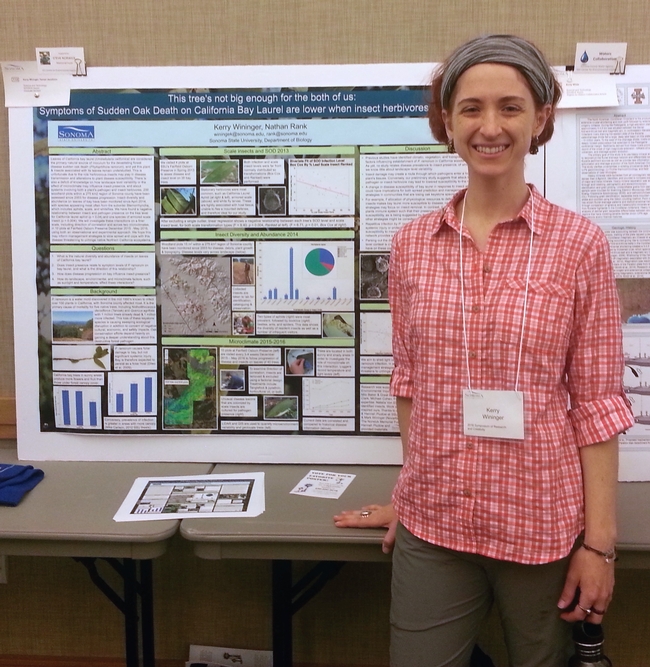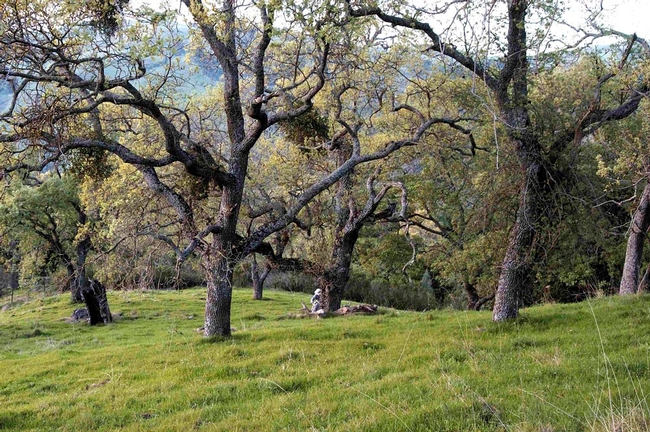
The dichotomy is real. Annually since 2006, Garbelotto's Lab has run a successful state-wide citizen science “SOD Blitz” campaign in each infested or at-risk California county; UCCE Sonoma coordinates this county's efforts. Volunteers in the community, from high schoolers to retirees, collect symptomatic leaves of the two trees most likely to spread the disease to oaks, California Bay Laurel and Tanoak, then Garbelotto's lab tests them. Results from the most recent Blitz show the largest increase in cases of Bay and Tanoak infections by Phytophthora ramorum, the causal agent of SOD, since the surveys began3.
|
What you can do:
|
The estimated true infection rate of Sonoma county trees more than doubled since just last year. A new outbreak has appeared in the coastal area of northern Sonoma County, and infections have re-emerged in areas from which the disease had previously retreated during the drought. Further afield is the most striking, and discouraging, discovery from last year's Blitz – multiple infections were detected in San Luis Obispo, more southerly than ever previously documented, paving the way to add a 16th county to those listed as infected in the state. Infection was also observed in the hot eastern vicinity of Ukiah for the first time, startling researchers who are accustomed to the pathogen's preference for moist, cool areas. Other findings include two new possible host species in the San Francisco Botanical Garden at Strybing Arboretum, the first detected infections on Mt. Diablo in Contra Costa County, and an outbreak in southern coastal Mendocino County.
On the upside, substantially more trees were tested during this last blitz than in recent years, novel areas were sampled, and new participants joined the ranks of Citizen Scientists. New treatment recommendations out of the Garbelotto Lab show promise in helping individual trees more safely and effectively decrease their chances of infection if done so before exposure to the pathogen4.
Why should land owners and managers, businesses, and the public care? Sudden Oak Death poses many apparent threats as well as those that are less obvious. The dramatic loss of oaks and tanoaks impacts biodiversity, nutrient and water cycling, forest microclimate, wildlife, and erosion. There is the potential for increased fire risk and severity in areas with dead and downed trees, creating a safety hazard (Forrestel et al. 2015). Recreation in forests is altered (Kliejunas 2010). Traditional cultural practices are impacted. Even human health concerns such as transmission of Lyme Disease have the potential to increase (Swei et al. 2010). Lastly, economic consequences of SOD to land owners, municipalities, nurseries, and industry are estimated in the tens or even hundreds of millions of dollars (US GEO 2006).
Now, more than ever, it's important for scientists, educators, professionals, and the community to come together. Though the news is disheartening, and attention may be elsewhere, collectively we can help slow the spread and cope with this disease that threatens to unhinge native California ecosystems and all that they impact.
Kerry is the new Sudden Oak Death Program Coordinator for UCCE Sonoma County, “I enthusiastically follow in the footsteps of the esteemed Lisa Bell, and am already in awe of the great work the Master Gardener SOD team does. I am eager to help get the word out about this challenge and how to face it, and hope to implement new ideas related to SOD content in environmental education and trainings for tree care professionals.” Kerry has an undergraduate degree in Biology from UC Berkeley, and has worked with various environmental organizations as a researcher, educator, naturalist, and communicator while pursuing a Masters Degree on SOD and insect herbivores of bay at Sonoma State University. She has presented research at conferences, such as last summer's SOD6 Symposia in San Francisco that garnered international attention5, and the California Forest Pest Council Annual meeting that this year focused much more on drought-induced beetle attacks in the Sierras than it did on SOD6.
If you are interested in learning more or getting involved, please contact Kerry Wininger kwininger@ucanr.edu.
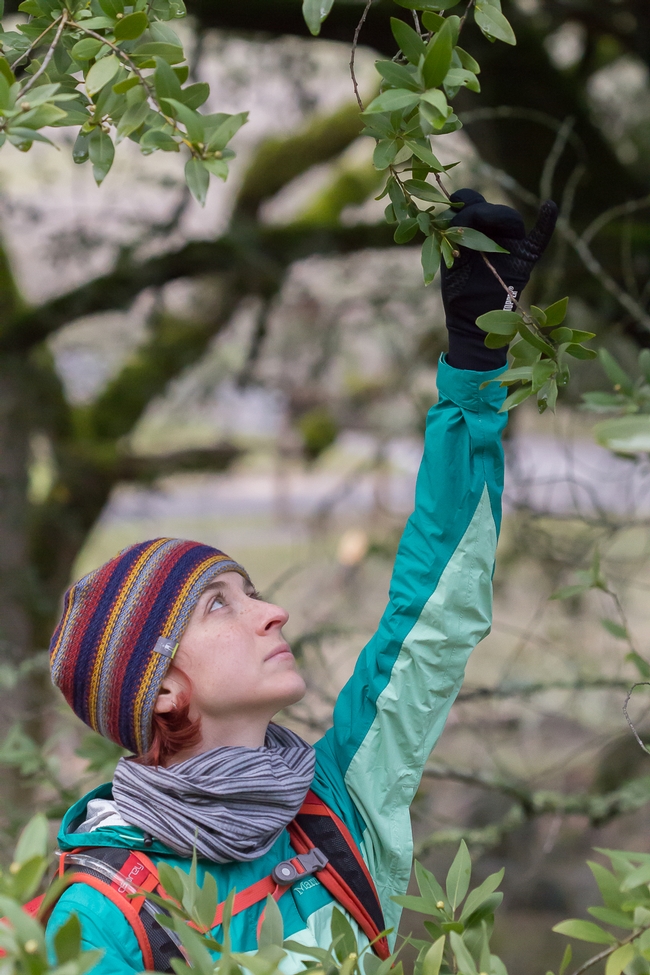 Fieldwork: Kerry Wininger assessing symptoms of Sudden Oak Death on a California Bay Laurel tree at Fairfield Osborn Preserve on Sonoma Mountain January 2016 |
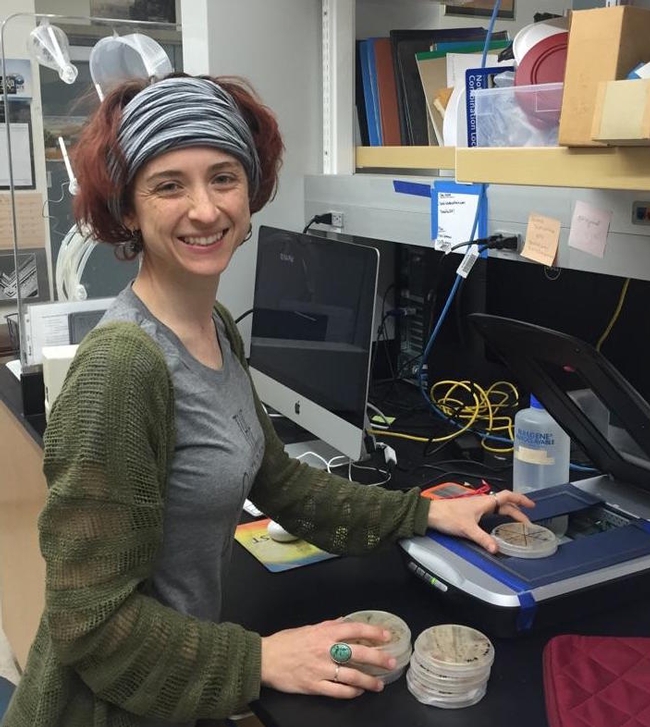 Kerry in the lab |
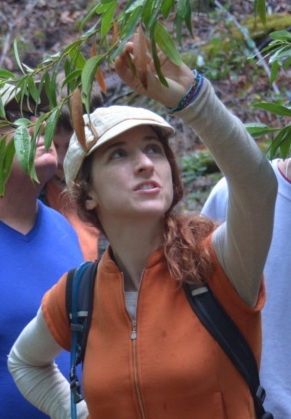 Kerry giving a tour |
|
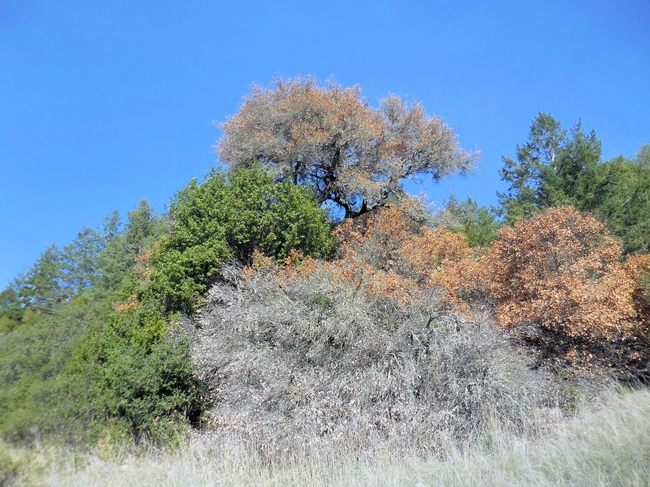
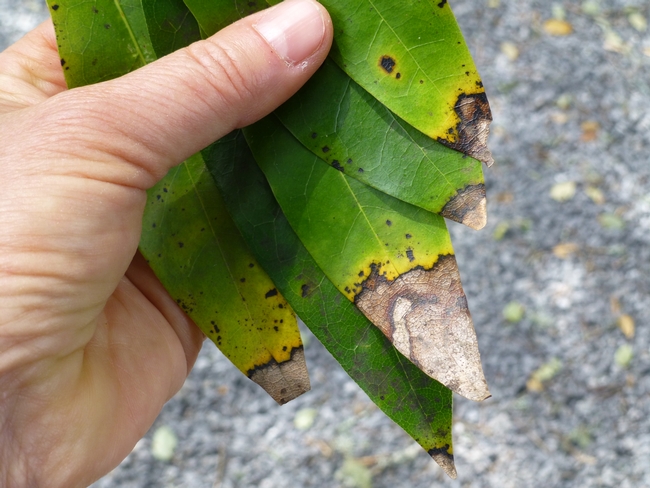
1. Drought slows spread of sudden oak death in Sonoma County, The Press Democrat, Sept 29, 2015
2. Sudden oak death in Sonoma County explodes, thanks to winter rains, The Press Democrat, Oct 18, 2016
3. Largest Sudden Oak Death Expansion in California in a Decade, CA Oak Mortality Task Force, Oct 14, 2016
4. SOD Disease Management, UC Berkeley Forest Pathology & Mycology Lab, Oct 20, 2016
5. SOD 6th Science Symposium, UCANR, June 21-23, 2016
6. 2016 California Forest Pest Council Annual Meeting Presentations
7. SOD, UC Master Gardener Program of Sonoma County
8. TreeFAQs, UC Berkeley Forest Pathology & Mycology Lab
Bibliography
Forrestel, AB, Ramage, BS, Moody, T, Moritz, MA, Stephens, SL. 2015. "Disease, fuels and potential fire behavior: Impacts of Sudden Oak Death in two coastal California forest types." Forest Ecology and Management, 348: 23-30.
(GAO) US Government Accountability Office, 2006. Invasive Forest Pests: lessons learned from three recent infestations may aid in managing future efforts. Report from the United States Government Accountability Office to the Chairman, Committee on Resources, House of Representatives.
Kliejunas, JT. 2010 Sudden oak death and Phytophthora ramorum: a summary of the literature. US Department of Agriculture, Forest Service, Pacific Southwest Research Station: General Technical Report PSW-GTR-234.
Swei, A; Ostfeld, RS.; Lane, RS.; Briggs, CJ. Oecologia. 2011. Effects of an invasive forest pathogen on abundance of ticks and their vertebrate hosts in a California Lyme disease focus. 166(1):91-100.
